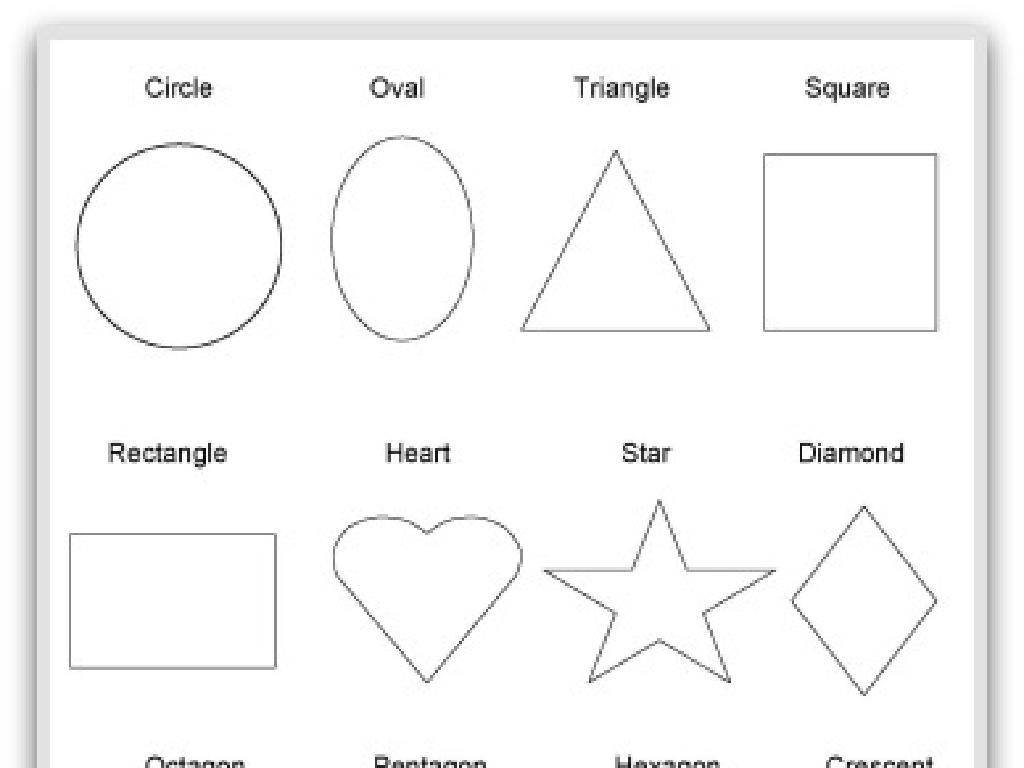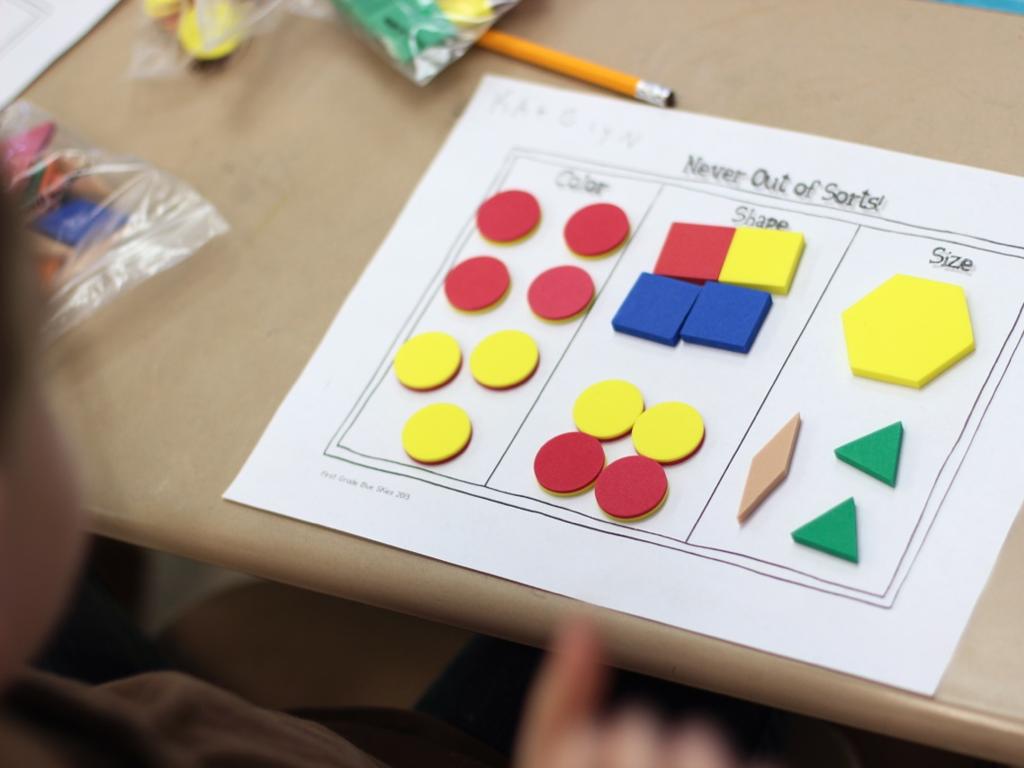Identify Representative, Random, And Biased Samples
Subject: Math
Grade: Sixth grade
Topic: Statistics
Please LOG IN to download the presentation. Access is available to registered users only.
View More Content
Welcome to Statistics: Exploring Samples
– Statistics: A world of numbers
– Defining ‘Sample’ in statistics
– A ‘sample’ is a subset of a population used to represent the whole.
– Types of samples: Representative, Random, Biased
– Representative samples mirror the population, random samples are selected by chance, and biased samples are skewed.
– Importance of sample selection
– Choosing the right sample affects the accuracy of our conclusions.
|
This slide introduces students to the concept of statistics as a tool for understanding information through numbers. Emphasize that statistics help us make sense of large amounts of data by looking at samples. Define what a sample is and discuss the importance of using the correct sampling method to ensure accurate results. Explain that a representative sample accurately reflects the population, a random sample is selected purely by chance, and a biased sample is influenced by factors that may skew the results. Highlight that the type of sample chosen can greatly impact the validity of statistical findings. Encourage students to think about why it’s important to choose samples carefully in any statistical study.
Understanding Samples in Statistics
– Define a statistical sample
– A subset of a larger population used for analysis
– Purpose of using samples
– To make inferences about a population without examining everyone
– Samples in daily life
– Surveys, taste tests, opinion polls
– Recognizing sample types
– Differentiate between representative, random, and biased samples
|
This slide introduces the concept of a sample in the context of statistics. A sample is a selection from a larger group (population) that we study to gain insights about the whole. We use samples because it’s often impractical or impossible to examine an entire population. Everyday examples include taste tests at a grocery store or surveys conducted by researchers. It’s crucial for students to understand that the type of sample (representative, random, or biased) affects the validity of the statistical analysis. Activities can include identifying types of samples from different scenarios and discussing why a particular type of sample might be chosen for a study.
Understanding Types of Samples in Statistics
– Representative vs. Biased Samples
– Representative reflects the whole population, biased does not.
– Defining a Random Sample
– Random sample: every member has equal chance of being selected.
– Role of Samples in Research
– Sample types affect the accuracy and reliability of research outcomes.
– Evaluating Sample Validity
– Learn to assess if a sample is truly representative or biased.
|
This slide introduces students to the concept of sampling in statistics, which is crucial for conducting research. A representative sample accurately mirrors the population being studied, while a biased sample does not, leading to unreliable results. A random sample is one where each member of the population has an equal chance of being chosen, which helps in achieving a representative sample. Understanding these concepts is vital for students as they learn how to evaluate the validity of studies and surveys they encounter in academic research and in media. Encourage students to think critically about how samples are chosen and to question the reliability of conclusions drawn from potentially biased samples.
Understanding Representative Samples
– Traits of a representative sample
– It mirrors the larger group’s characteristics.
– Steps to get a representative sample
– Use random methods, ensure all parts of the population are included.
– Example: Classroom snack choice
– Surveying a few students from each grade to decide on a snack for the school fair.
|
A representative sample accurately reflects the population from which it’s drawn, containing all the variations present in the population. To obtain such a sample, one might use random selection, ensuring that each member of the population has an equal chance of being chosen, and stratification, to include all segments of the population. For instance, when choosing a snack for the school fair, a representative sample would include opinions from students of all grades, rather than just one, to cater to everyone’s preferences. This concept is crucial for students to understand how data can be collected in a way that is fair and unbiased, providing a true reflection of the whole group’s preferences or characteristics.
Understanding Random Samples in Statistics
– Defining a random sample
– Each member of the population has an equal chance of being selected.
– Ensuring sample randomness
– Use methods like drawing names from a hat or random number generators.
– Random sample methods
– Example: Selecting students by lottery to represent a class opinion.
– Example of random sampling
|
A random sample is a subset of individuals chosen from a larger set where each individual has an equal chance of being selected. To ensure randomness, avoid any form of bias during selection. Common methods include using random number tables, drawing names from a hat, or employing computer-generated random numbers. For example, to understand the favorite school lunch, we might randomly select a group of students to survey. This slide will help students grasp the concept of randomness and its importance in obtaining a representative sample for statistical analysis.
Understanding Biased Samples in Statistics
– What is a biased sample?
– A sample that doesn’t fairly represent the population.
– Impact of bias on results
– Bias can skew results, leading to incorrect conclusions.
– Recognizing bias in studies
– Look for samples that exclude or over-represent parts of a population.
– Avoiding bias in sampling
– Use random selection to create an unbiased sample.
|
This slide aims to educate students on the concept of biased samples in statistics. A biased sample occurs when the selection process favors certain outcomes over others, leading to a sample that isn’t representative of the larger population. This can significantly affect the results of a study, often invalidating the conclusions. Students should learn to identify potential bias by analyzing how samples are collected and considering whether all parts of the population are equally represented. To prevent bias, one should employ random sampling methods where every member of the population has an equal chance of being selected. Encourage students to think critically about the samples they encounter in studies and question the validity of the results based on the sampling method used.
Comparing Different Types of Samples
– Representative vs Random vs Biased
– Representative reflects whole population, random is without pattern, biased is influenced.
– Importance of sample distinctions
– Knowing the type of sample helps in accurate data interpretation and decision making.
– Activity: Sample Identification
Identify types of samples in given real-world scenarios, noting clues indicating sample type.
– Discuss findings and understanding
|
This slide aims to help students understand the differences between representative, random, and biased samples. A representative sample accurately reflects the characteristics of the population from which it is drawn. A random sample is selected without any specific pattern, ensuring each member of the population has an equal chance of being chosen. A biased sample is one that does not accurately represent the population, often due to a method of selection that is prejudiced or influenced. Understanding these distinctions is crucial for accurate data interpretation and making informed decisions based on statistics. The class activity involves students working with scenarios to identify the type of sample used. This will help them apply their knowledge practically and understand the implications of sample types in research. Teachers should prepare diverse scenarios that clearly illustrate each type of sample for the activity.
Class Activity: Sample Scavenger Hunt
– Form small groups for the activity
– Find samples in media sources
– Look in magazines, newspapers, or online
– Classify each sample type
– Decide if they’re representative, random, or biased
– Discuss your classifications
– Explain the reasoning behind your choices
|
This interactive class activity is designed to help students apply their knowledge of statistics to real-world contexts. By working in groups, students will engage with various media sources to identify and classify samples as representative, random, or biased. The activity encourages critical thinking as students must justify their classifications to their peers. As a teacher, facilitate the activity by providing a diverse range of media sources and guiding the discussion to ensure that each group understands the concepts. Possible variations of the activity could include comparing samples from different media sources, discussing how sample types can affect the validity of a survey or study, and exploring how bias can influence statistical results.
Conclusion: Understanding Samples & Homework
– Recap: Types of Samples
– Importance of Right Sample
– Homework: Sample Types in News
– Find news articles with representative, random, and biased samples
– Explain Your Choices
– Justify why each is representative, random, or biased
|
As we wrap up our lesson on statistics, it’s crucial for students to remember the different types of samples: representative, random, and biased. Understanding these concepts is key to analyzing data accurately. For homework, students are tasked with finding real-world examples of each sample type in news articles, which will help them apply what they’ve learned in a practical context. They should explain their reasoning for each example, reinforcing their critical thinking skills. This exercise will also enhance their ability to discern the quality of statistical evidence presented in media. In the next class, we’ll discuss their findings, providing an opportunity for peer learning and further discussion on the impact of sample selection in data interpretation.





